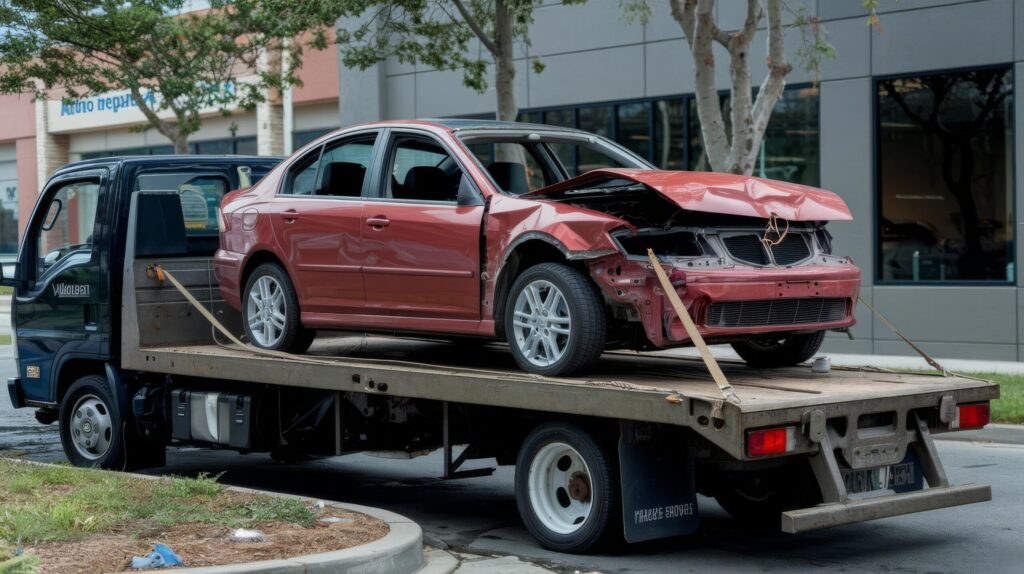Selling an old car is never simple, especially when it has been sitting untouched for months or even years. Whether it is parked in the garage, on the street, or in the backyard, a car that no longer runs or has not moved for a long time might seem like it has no use left. But the truth is, even an unused car can still put money in your pocket.
Many people across Australia find themselves unsure of what to do with a vehicle that has not been started in ages. It may have rusted panels, a flat battery, or missing parts. Some might not even have the paperwork anymore. Still, there are ways to turn it into cash without needing to restore it or spend big on fixing it up.
This guide walks through what steps to follow if you are ready to say goodbye to an idle car and want to sell it for cash — no matter what shape it is in.
Step 1: Assess the Car’s Condition Honestly
Before doing anything else, take a moment to inspect the car. Look at it from the outside and inside. Note if there is damage, missing parts, or signs of weather wear like rust or faded paint. Open the bonnet and try to start it, if possible. Even if it does not run, noting the state of the engine, tyres, and battery can help later when speaking to buyers.
Do not worry if the car is not working or even if it is not complete. What matters more is knowing its condition so you can give clear answers when asked.
Step 2: Gather Any Paperwork You Can Find
You may not have the full service history or original purchase receipt anymore, especially if the car has not been used in years. That is fine. But try to find whatever paperwork you do have, such as:
-
The registration certificate (even if it is expired)
-
Old insurance papers
-
Your driver’s licence
-
Proof of ownership
Some buyers might request a simple proof that the car is yours, while others are more relaxed about it, especially if the car is clearly no longer on the road.
Step 3: Take Photos That Show the Real Condition
Even if you are not listing the car online, taking a few clear photos can help explain the car’s condition to anyone interested. Snap a few shots of the front, back, sides, tyres, inside cabin, and under the bonnet. If there is damage, it is better to show it upfront.
Buyers appreciate when you do not hide anything. It also saves you from explaining the same details over and over again.
Step 4: Decide Whether to Sell for Parts or as a Whole
When a car has not been running for a long time, there are usually two choices: sell it as it is or remove parts and sell them one by one.
Selling for parts might seem like a good idea at first, but it can take time. You will need the tools, space, and knowledge to remove usable parts safely. Plus, there is the issue of where to list them, how to pack them, and dealing with buyers one by one.
On the other hand, selling the car in one go — even if it is in poor shape — is much faster and simpler. There are many buyers who specialise in taking old, idle vehicles. Some even take care of the towing.
You can find more details about selling cars in Bondi at https://www.webuycarsforcash.com.au/cash-for-cars-bondi/
Step 5: Contact Local Car Buyers or Removal Services
Once you are ready, reach out to car buyers in your area who deal with older or broken cars. These are not the same as dealerships, who usually do not want anything that cannot be driven.
Look for removal services or scrap buyers who accept vehicles of all types. Many of them come to you, look at the car, offer a price, and remove the vehicle on the same day. They handle the process without making you feel rushed or pressured.
You might be surprised to find that even a completely dead car can still fetch a fair bit of cash — often because of the metal, wheels, or specific parts still inside.
Step 6: Get Quotes Before You Agree to Anything
It is wise to get a few quotes from different places before you choose who to sell to. This way, you know you are not settling for less than what your car is worth.
Be honest about the condition. If one quote is far higher than others, ask why. A good buyer will explain clearly how they reached their figure. That is how you know they know what they are doing.
Step 7: Final Checks Before Collection
Before the buyer arrives to collect the car, remove any personal items from the glovebox, boot, and cabin. Also, take off the licence plates and keep them unless told otherwise.
You may be asked to sign a simple form to transfer ownership or hand over whatever papers you have. Once that is done and the car is removed, you are no longer responsible for it.
If the car was still registered, you can return the plates to the local authority and apply for a registration refund.
One Solution for Cars That Will Not Move
If your car has been sitting idle for years and no longer drives, you might think no one would want it. But that is not always true. Some businesses in your local area make it their job to deal with these kinds of vehicles. For instance, scrap car yard sydney offers a way for Sydney residents to turn unused, broken, or abandoned cars into cash. They take care of the towing and handle all types of cars, even those missing parts or covered in dust. This makes them a practical choice for people who do not want to spend time fixing or advertising their vehicle. If you are in Sydney and looking to get rid of an old car, they can be one option worth considering.
Final Thoughts
A car that has been sitting idle for a long time may look like junk, but it still holds value. Whether it is the body, the parts, or just the metal, someone out there is willing to take it off your hands — and pay you for it.
The key is to stay realistic, get a few quotes, and go with a buyer who makes the process clear and simple. You do not need to fix the car or explain why it has not been used. All that matters is knowing what you have and being ready to let it go.
Turning an old, forgotten vehicle into money is more doable than most people think — and it clears up space in the yard or driveway too.



